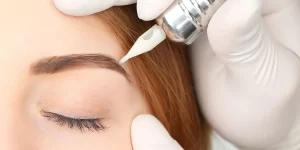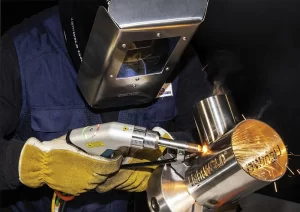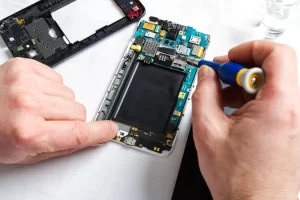In the realm of cosmetic enhancements, individuals are increasingly opting for brow tattooing and microblading to achieve fuller and more defined eyebrows. However, when it comes to choosing between these two techniques, it is crucial to consider the health factors involved.
This article aims to evaluate the health aspects of brow tattooing and microblading, providing valuable insights for making an informed choice. By examining the potential risks, benefits, and long-term effects of each method, individuals can prioritize their overall well-being.
Additionally, this evaluation will delve into the safety measures, hygiene practices, and qualifications of professionals who perform these procedures. Armed with this knowledge, readers can confidently prioritize their health when considering brow enhancements.
Key Takeaways
- Brow tattooing involves implanting pigment into the skin using a machine, while microblading uses a manual tool with tiny needles to create hair-like strokes on the skin’s surface.
- Brow tattooing creates a more defined and filled-in look, resembling traditional makeup, while microblading results in a more natural and realistic look, mimicking the natural pattern of eyebrow hair.
- Brow tattooing can last for several years with touch-ups, while microblading typically lasts for one to two years.
- Potential health risks of both brow tattooing and microblading include allergic reactions to the ink or pigments used, infections due to improper sterilization of equipment, and scar formation. Consulting with a professional and experienced technician can minimize these risks and ensure a safe procedure.
Understanding the Key Differences
The key differences between brow tattooing and microblading are important to understand for those considering these cosmetic procedures. While both techniques involve enhancing the appearance of the eyebrows, they differ in terms of application, longevity, and appearance.
Brow tattooing, also known as permanent makeup or cosmetic tattooing, is a procedure where pigment is implanted into the skin using a machine. This technique creates a more defined and filled-in look, resembling traditional makeup. The results are long-lasting and can last for several years with touch-ups.
On the other hand, microblading is a semi-permanent technique that uses a manual tool with tiny needles to create hair-like strokes on the skin’s surface. The strokes mimic the natural pattern of eyebrow hair, resulting in a more natural and realistic look. Microblading typically lasts for about one to two years before requiring a touch-up.
Potential Health Risks of Brow Tattooing
Potential health risks of brow tattooing include allergic reactions and infections. These risks can occur due to various factors involved in the tattooing process. Here are three potential health risks to consider:
- Allergic reactions: Some individuals may develop an allergic reaction to the ink used in brow tattooing. This can lead to symptoms such as itching, redness, swelling, and even blistering. It is essential to conduct a patch test before the procedure to identify any potential allergies.
- Infections: Improper sterilization of equipment or poor hygiene practices during the tattooing process can increase the risk of infections. Bacterial or viral infections can occur, leading to symptoms like pain, swelling, redness, and discharge. It is crucial to ensure that the tattoo artist follows strict sterilization protocols to minimize this risk.
- Scar formation: In some cases, brow tattooing can result in the formation of scars. This can happen due to excessive trauma to the skin or improper healing. Scarring can affect the appearance of the brows and may require additional treatments to correct.
It is important to weigh the potential health risks against the desired outcome when considering brow tattooing. Consulting with a professional and experienced tattoo artist can help minimize these risks and ensure a safe procedure.
Potential Health Risks of Microblading
Continuing the evaluation of health factors in brow tattoo vs. microblading, it is important to consider the potential health risks associated with microblading.
While microblading is generally considered safe, there are some risks that individuals should be aware of. One potential risk is infection. Since microblading involves creating small incisions in the skin, there is a possibility of introducing bacteria, which can lead to infection.

Another risk is an allergic reaction to the pigments used in the procedure. Some individuals may experience redness, swelling, or itching in the treated area.
Additionally, improper sterilization of equipment can increase the risk of infection and transmission of bloodborne pathogens. It is crucial to choose a reputable and experienced technician who follows strict sterilization protocols to minimize these risks.
Choosing the Right Technique for Your Health
When considering the best technique for your health, it is important to carefully evaluate the differences between brow tattoo and microblading. Both techniques aim to enhance the appearance of eyebrows, but they have distinct characteristics that may impact your health differently.
Here are three key factors to consider:
- Method: Brow tattooing involves using a tattoo machine to implant pigment into the skin, while microblading uses a handheld tool with tiny needles to create small incisions for pigment insertion.
- Healing process: Brow tattooing typically requires a longer healing process due to the deeper penetration of the pigment. On the other hand, microblading has a shorter healing time as the incisions are shallow.
- Longevity: Brow tattoos tend to last longer, with some lasting up to five years. Microblading, on the other hand, may require touch-ups every one to two years.
Understanding these differences will help you make an informed decision about which technique is best for your health and desired outcome.
Preparing for a Safe Brow Enhancement Procedure
To ensure a safe and successful brow enhancement procedure, it is crucial to adequately prepare beforehand.
Preparing for a safe brow enhancement procedure involves several important steps.
First, it is essential to choose a reputable and experienced technician or artist who specializes in brow tattoo or microblading. Research their qualifications and read reviews from previous clients to ensure their expertise and professionalism.
Next, schedule a consultation with the technician to discuss your desired brow shape, color, and any concerns or questions you may have. They will also assess your skin type and condition to determine the best approach for your specific needs.
Prior to the procedure, it is important to follow any pre-care instructions provided by the technician, such as avoiding alcohol, caffeine, and certain medications that can thin the blood. Additionally, make sure to disclose any allergies or medical conditions that may affect the procedure.
Post-Procedure Care for Optimal Health and Results
Proper post-procedure care is essential for ensuring optimal health and results after a brow tattoo or microblading treatment. Here are three important steps to take in order to achieve the best outcome:
- Keep the treated area clean: Gently clean the brow area with a mild cleanser and water, using a clean cotton pad or Q-tip. Avoid rubbing or scratching the area to prevent infection or irritation.
- Avoid excessive moisture: It is crucial to keep the treated area dry for the first few days after the procedure. Avoid activities that may cause excessive sweating or water exposure, such as swimming or intense workouts.
- Follow the aftercare instructions provided by your technician: Each professional may have specific guidelines for post-procedure care. It is important to follow their instructions regarding the use of ointments or creams, as well as any restrictions on activities or products to ensure optimal healing and long-lasting results.
Frequently Asked Questions
How Long Does a Brow Tattoo Last Compared to Microblading?
A brow tattoo typically lasts longer compared to microblading. While microblading can last 1-3 years, a brow tattoo can last anywhere from 5-10 years. However, the longevity may vary depending on individual factors and the aftercare provided.
Can Brow Tattooing or Microblading Cause Allergic Reactions?
Brow tattooing and microblading have the potential to cause allergic reactions. It is important to consider the individual’s skin sensitivity and potential allergies to the pigments and chemicals used in these procedures.
Is One Technique Safer Than the Other for People With Sensitive Skin?
In evaluating the safety of brow tattooing and microblading for individuals with sensitive skin, it is important to consider factors such as the quality of materials used, the expertise of the technician, and the individual’s specific skin sensitivities.
Are There Any Long-Term Health Risks Associated With Brow Tattooing or Microblading?
Long-term health risks associated with brow tattooing or microblading can vary depending on factors such as the skill of the technician and the individual’s skin type. It is important to consult with a professional and consider potential risks before undergoing either procedure.
What Are the Recommended Aftercare Steps to Ensure Optimal Health and Results After a Brow Enhancement Procedure?
To ensure optimal health and results after a brow enhancement procedure, it is important to follow recommended aftercare steps. These may include avoiding water, direct sunlight, and harsh skincare products, as well as keeping the area clean and moisturized.
Conclusion
In conclusion, when considering brow enhancements such as brow tattooing or microblading, it is crucial to prioritize health factors. Both techniques have potential health risks, including infections, allergic reactions, and scarring.
However, by ensuring that professionals follow proper safety measures and hygiene practices, individuals can minimize these risks.
Ultimately, individuals must carefully evaluate their own health and consult with qualified professionals to determine the best technique for their specific needs and overall well-being.
You May Also Like:



